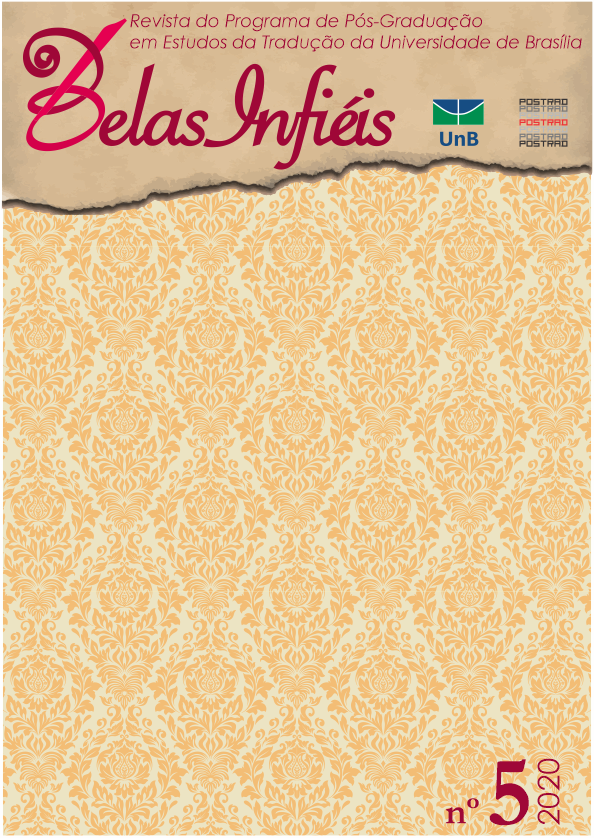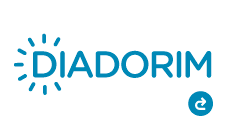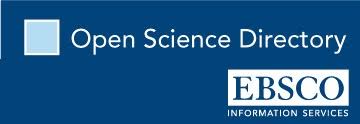Raciocínio Ético Baseado no Contexto da Interpretação: Uma Perspectiva do Esquema de Controle de Demanda
DOI:
https://doi.org/10.26512/belasinfieis.v9.n5.2020.28282Palavras-chave:
Formação de intérpretes; ética; esquema de demanda e controle; supervisão; profissão prática; práticas reflexivas de aprendizagem; tomada de decisão.Resumo
A prática de interpretação ética deve se basear em uma análise contínua dos fatores contextuais relevantes que surgem em uma situação de interpretação. Embora apoiada em certa medida na pedagogia da interpretação, essa afirmação vai contra grande parte da história e da contínua retórica do campo da interpretação. Os alunos de interpretação recebem uma mensagem dúbia quando os professores defendem uma abordagem não contextual, baseada em regras à ética, enquanto simultaneamente respondem a perguntas éticas e de tradução com “isso depende,” o que é uma referência óbvia à centralidade do contexto na tomada de decisões. Este artigo elucida uma estrutura de raciocínio ético teleológico (focado em resultados) que depende de uma análise contínua do contexto dinâmico da situação de interpretação. Fundamentada na construção da responsabilidade profissional da profissão, essa abordagem examina o diálogo co-criado entre o intérprete, os usuários presentes e o contexto de seu encontro coletivo. Argumenta-se aqui que o raciocínio crítico a serviço da eficácia do trabalho equivale ao raciocínio ético, mesmo na ausência de um dilema ético. A abordagem dos autores de uma análise do trabalho de interpretação baseado no contexto e na tomada de decisões ”“ o esquema de controle de demanda (DC-S ”“ Demand Control Schema) ”“ tem sido objeto de vários estudos e pesquisa, incluindo um projeto recentemente concluído envolvendo 15 programas de formação de intérpretes nos Estados Unidos.
Downloads
Referências
________. The Visible Co-Participant: The Interpreter’s Role In Doctor-Patient Enounters’. In: METZGER, M.; COLLINS, S.; DIVELY, V.; SHAW, R. (Org.) From Topic Boundaries To Omission: New Research in Interpretation. Washington, DC: Gallaudet University Press, 2003.
________. Revisiting the interpreter’s role. A study of conference, Court and Medical Interpreters in Canada, Mexico, and the United States. Amsterdam & Philadelphia: John Benjamins, 2004.
ATWOOD, A. Clinical Supervision as a Method of Providing Behavioral Feedback to Sign Language Interpreters and Students of Interpreting. In: MeIATIRE, M. (Org.) New Dimensions in Interpreter Education: Curriculum and Instruction. Proceedings od the 6th National Convention of the Conference Interpreter Trainers (CIT). Chevy ChaseMD: CIT, 1986.
CARTWRIGTH, B. E. Encounters with reality: 1,001 interpreter scenarios. Silver Springs, MD: RID Press, 1999.
COKELY, D. Interpreting: A Sociolinguistic Model. Burtonsville, MD: Linstok Press, Inc., 1992.
________. Exploring Ethics: A Case for Revisign the Code of Ethics, Journal of Interpretation, 25-60, 2000.
DEAN, R. K. Review of Revisiting the interpreter’s role. A study of conference, Court and Medical Interpreters in Canada, Mexico, and the United States. The Sign Language Translator and Interpreter, v. 1, n. 2, p. 305-08, 2007.
________. Challenges in Interpreting Addressed by Demand-control Schema Analysis. In:
CARTWRIGTH, B. E. (Org.) Encounters with reality: 1,001 interpreter scenarios. 2nd edition, Silver Springs, MD: RID Press, 2009.
DEAN, R. K.; POLLARD JR, R. Q. The Application of Demand-control Theory to Sign Language Interpreting: Implications for Stress and Interpreter Training, Journal of Deaf Studies and Deaf Education, v. 6, n. 1, p. 1-14, 2001.
________.; _______. A Practice-profession. Model of Ethical Reasoning. VIEWS, v. 21, n. 9:1, p. 28-29, 2004.
________.; _______. 'Consumers and Service Effectiveness in Interpreting Work: A Practice Profession Perspective'. In MARSCHARK, M.; PETERSON, R.; WINSTON, E. (Org) Interpreting and Interpreter Education: Directions for Research and Practice, New York: Oxford University Press, 2005.
________.; _______. From Best Practice to Best Practice Process: Shifting Ethical Think-ing and Teaching. In: MARONEY, E. M. (ed.) A New Chapter in Interpreter Education: Accreditation, Research and Technology. Proceedings of the 16th National Convention of the Conference of Interpreter Trainers, (CIT), Monmouth, OR: CIT, 119-31.
________.; _______. (Produtores) Demands and Controls Together. Motion Picture: Third in a Series of Four Instructional Films on the Demand Control Schema for Interpreting. Available from the Deaf Wellness Center, 300 Crittenden Boulevard, Rochester, NY 14642, USA, 2008a.
________.; _______. (Produtores) Ethics and Interpreting. Motion Picture: Fourth in a Series of Four Instructional Films on the Demand Control Schema for Inter-prefing. Available from the Deaf Wellness Center, 300 Crittenden Boulevard, Rochester, NY 14642, USA, 2008b.
________.; _______. "Just when I figured out the answers, someone changed the clues.- flow': Thoughts about the Interview Portion of the MC'. VIEWS, v. 25, n. 8, p. 21-22, 2008c.
________.; _______. (Produtores) The Controls of interpreting. Motion Picture: Second in a Series of Four Instructional Films on the Demand Control Schema for Interpreting. Available from the Deaf Wellness Center, 300 Crittenden Boul-evard, Rochester, NY 14642, USA, 2008d.
________.; _______. (Produtores) The Demands of Interpreting. Motion Picture: First in a Series of Four Instructional Films on the Demand Control Schema for Interpreting. Available from the Deaf Wellness Center, 300 Crittenden Boul-evard, Rochester, NY 14642, USA, 2008e.
________.; _______. Deontological and Teleological Ethics', Newsli: Magazine for the Association of Sign Language Interpreters for England, Wales and Northern Ireland 67: 3-5, 2009a.
________.; _______. Effectiveness of Observation-supervision Training in Community Mental Health Interpreting Settings. REDIT E-journal on the Didactics of Translation and Interpreting, v. 3, p. 1-17, 2009b.
________.; _______. "I don't think we're supposed to be talking about this': Case Conferencing and Supervision for Interpreters', VIEWS, v. 26, p. 28-30, 2009c.
DEAN, R. K., DAVIS, J.; BARNETT, H.; GRAHAM, L. E.; HAMMOND, L.; ILINCHEY, K. 'Training Medically Qualified In-tcrpreters: New Approaches, New Applications, Promising Results', VIEWS, v. 20, n. 1, p. 10-12, 2003.
DEAN, R.K., POLLARD, JR., R. Q; DAVIS, J.; GRIFFIN, M.; LACAVA, C.; MORRISON, B.; PARMIR, J.; SMITH, A.; STOME, S.; SUBACK, L. The Demand-control Schema: Effective Curricular Implementation. In: MARONEY, E. M. (Org.) CIT: Still Shining after 25 Years. Proceedings of the 15th National Convention of the Conference of interpreter Trainers (CIT), Monmouth, OR: CIT, 145-61, 2004.
DEAN, R. K., POLLARD, JR., R, Q.; ENGLISH, M. A. Observation-supervision in Mental Health Interpreter Training. In MARONEY, E. M. (Org.) CIT: Still Shining after 25 Years, Proceedings of the 15th National Convention of the Conference of Interpreter Trainers (CIT), Monmouth, OR: CIT, 55-75, 2004.
DEAN, R. K.; POLLARD, JR., R, Q.; SAMAR, V. J. (2010) RID Research Grant Underscores Occupational Health Risks: VRS and IC-12 Settings Most Concerning, VIEWS, v. 27, n. 1, p. 41-43, 2010.
Distance Opportunities for Interpreter Training Center (n.d.) Entiy-to-Practice Competencies for AM./English Interpreters. Available at http://www.utico.eduidoit/Competencies _brochure handout.pdf (Último acesso em June 2010).
FORESTAL, E. M.; WILLIAMS, C. L. Teaching and Learning Using the Demand Control Schema', In: DEAN, R. K.; POLLARD, JR., R, Q. (Org) Applications of Demand Control Schema in Interpreter Education, Proceedings of the August 3th 2007 Pre-conference Meeting at the National Convention of the Registry of Interpreters for the Deaf. Rochester, NY: University of Rochester, 23-29, 2008.
FRITSCH-RUDSER, S. The RID Code of Ethics, Confidentiality and Supervision. Journal of Interpretation, v. 3, p. 47-51, 1986.
GIBSON, S.A First-hand Account of Observation-supervision Training. VIEWS, v. 22, n. 4, p. 1- 16, 2005.
GISH, S. ‘I understood all the words, but I missed the point': A Goal-to-detail/Detail-to-goal Strategy for Text Analysis'. In: McINTIRE, M. (Org.) New Dimensions in Interpreter Education Curriculum and Instruction. Silver Spring, MD: RID Publications, 12.5-37, 1987.
GLADWELL, M. Blink: The Power of Thinking without Thinking, New York: Back Bay Books/Little, Brown & Company, 2005.
HELLER, B.; STANSFIELD, M.; STARK, G.; LANGHOLTZ, D. Sign Language Interpreter Stress: An Exploratory Study. In: Proceedings of the 1985 Convention of the American Deafness and Rehabilitation Association. Little Rock, AR: ADARA, 1986.
HUMPHREY, J. H.; ALCORN, B. J. So You Want to Be an Interpreter? 2nd edition, Portland, OR: Sign Enhancers, 2005.
JOHNSON, L. J.; SKOLITS, G.; WITTER-MERITHEW, A. Optimizing and Disseminating Proven Reforms in Interpreter Education (Evaluation Re-port: Year 3,1 October 2008-30 September 2009). Unpublished manuscript, available from the University of Rochester, Deaf Wellness Center, 2010.
KARASEK, R. A. Job Demands, Job Decision Latitude, and Mental Strain: Implications for Job Redesign. Administrative Science Quarterly, v, 24, p. 285-307, 1979.
___________.; THEORELL, T. Healthy Work: Stress, Productivity, and the Reconstructing of Work Life. New York, NY: Basic Books, 1990.
MANDELBAUM, M. The Phenomenology of Moral Experience. Glen-roe, IL: Free Press, 2005.
MARSCHARK, M.; PETERSON, R.; WINSTON, E. (Org) Interpreting and Interpreter Education: Directions for Research and Practice. New York: Oxford University Press, 2005.
MASLOW, A. Motivation and Personality. 3ª edição. New York: Addison-Wesley, 1987.
METZGER, M. Sign Language Interpreting: Deconstructing the Myth of Neutrality, Washington, DC: Gallaudet University Press, 1999.
__________.; BAHAN, B. Discourse Analysis. In: LUCAS, C. (ed.) The Sociolinguistics of Sign Languages, Cambridge: Cambridge University Press, 112-44, 2001.
NAMY, C. Reflections on the Training of Simultaneous Interpreters: Metalinguistic Approach. In: GERVER, D.; SINAIKO, H. W. (Org.) Language Interpreting and Communication. New York: Plenum, 25-33, 1977.
NIEBUHR, H. R. The Responsible Self. Louisville: Westminster John Knox Press, 1963.
POCHHACKER, F. Introducing Interpreting Studies, London: Routledge, 2004.
POLLARD, R. Q. JR. Mental Health Interpreting: A Mentored Curriculum (Nine-chapter Text with Accompanying Videotape of Interpreting Vignettes). Rochester, NY: University of Rochester, 1998.
__________.; DEAN, R. K. (Org.) Applications of Demand Control Schema in Interpreter Education, Proceedings of the 3rd August 2007. Pre-conference Meeting at the National Convention of the Registry of Interpreters for the Deaf, Rochester, NY: University of Rochester, 2008.
ROY, C. B. Interpreting as Discourse Process. New York: Oxford University Press, 2000.
SMYTH, J. Teachers as Collaborative Learners in Clinical Supervision: A State of the Art Review. Journal of Education for Teaching, v. 10, n. 1, p. 24-37, 1984.
SEAL, B. C. Best Practices in Educational Interpreting. 2a edição, Boston: Allyn & Bacon, 2004.
STORM; S. DC-S Applications across the Curriculum: Reflections and Illustrations from the Teaching and Learning Journey. In: POLLARD, JR., R, Q.; DEAN, R. K. (Org.) Applications of Demand Control Schema in Interpreter Education, Proceedings of the 3rd August 2007 Pre-conference Meeting at the National Convention of the Registry of Interpreters for the Deaf. Rochester, NY: University of Rochester, 31-37, 2008.
TATE, G.; TURNER, G. H. The Code and the Culture: Sign Language Interpreting ”” In Search of the New Breed's Ethics. Deaf Worlds, v. 13, n. 3, p 27-34, 1997.
TORIKAL, K. Voice of the Invisible Presence. Diplorreatic Interpreting in Post World War II Japan. Amsterdam & Philadelphia: John Benjamins, 2009.
TURNER, G. H. Toward Real Interpreting. In: MARSCHARK, M.; PETERSON, R.; WINSTON, E. (Org.) Interpreting and Interpreter Education: Directions for Research and Practice. New York: Oxford University Press, 29-56, 2005.
WADENSJO, C. Interpreting as Interaction. London: Longman, 1998.
WINSTON, E. A. Transliteration: What's the Message? In: LUCAS, C. (Org.) The Sociolinguistics of the Deaf Community. San Diego, CA: Academic Press, 147-64, 1989.
___________. Designing a Curriculum for American Sign Language/English Interpreting Educators. In: MARSCHARK, M.; PETERSON, R.; WINSTON, E. (Org.) Interpreting and Interpreter Education: Directions for Research and Practice. New York: Oxford University Press, 208-34, 2005.
WITTER-MERITHEW, A. Infusing Demand Control Schema into an Interpreter Education Program Curriculum. In: POLLARD, JR., R, Q.; DEAN, R. K. (Org.) Applications of Demand Control Schema in Interpreter Education, Proceedings of the 3rd August 2007 Pre-conference Meeting at the National Convention of the Registry of Interpreters for the Deaf. Rochester, NY: University of Rochester, 31-37, 2008.
_________.; JOHNSON, L. J. Toward Competent Practice: Conversations with Stakeholders. Alexandria, VA: Registry of Interpreters for the Deaf, 2005.
WITTER-MERITHEW, A., JOHNSON, L. J.; TAYLOR, M. A National Perspective on Entry-to-practice Competencies. In: MARONEY, E. (Org). Proceedings of the 15th National Convention of the Conference of interpreter Trainers. CIT Publications, 2342, 2004.
Downloads
Publicado
Como Citar
Edição
Seção
Licença
Copyright (c) 2020 CC BY

Este trabalho está licenciado sob uma licença Creative Commons Attribution 4.0 International License.
Dado ao acesso público desta revista, os textos são de uso gratuito, com obrigatoriedade de reconhecimento da autoria original e da publicação inicial nesta revista
A revista permitirá o uso dos trabalhos publicados para fins não comerciais, incluindo direito de enviar o trabalho para bases de dados de acesso público. As contribuições publicadas são de total e exclusiva responsabilidade dos autores.
Os autores, ao submeterem trabalhos para serem avaliados pela revista Belas Infiéis, mantêm os direitos autorais e concedem à revista o direito de primeira publicação, sendo o trabalho licenciado sob a Creative Commons Attribution License Atribuição 4.0 Internacional (CC BY 4.0).



















